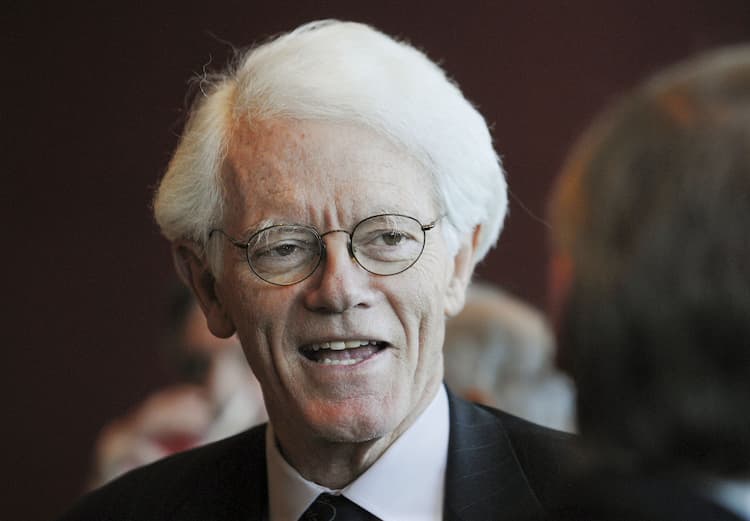Peter Lynch Biography
Peter Lynch is a philanthropist and investor from the United States. Between 1977 and 1990, Lynch was the manager of Fidelity Investment’s Magellan Fund, which had an annual return of 29.2%, more than double the S&P 500 stock market index and was the best-performing mutual fund in the world.
How old is Peter Lynch? – Age
He is 78 years old as of 19 January 2022. He was born in 1944 in Newton, Massachusetts, United States.
Peter Lynch Family – Education
Lynch’s father was diagnosed with cancer when he was seven years old, in 1951. Lynch’s father died three years later, and her mother was forced to work to support the family. Lynch claims that he worked as a caddie in his early teens to help support his family. Lynch used his savings as a sophomore at Boston College to purchase 100 shares of Flying Tiger Airlines at $8 per share.
The stock would eventually rise to $80 per share, with profits helping to pay for his education.
Lynch graduated from Boston College (BC) in 1965 after studying history, psychology, and philosophy. In 1968, he received a Master of Business Administration from the University of Pennsylvania’s Wharton School.
Peter Lynch Wife
Lynch married Carolyn Ann Hoff and together they established the Lynch Foundation. They had three children. His wife died in October 2015, at the age of 69, from leukemia complications.
What is Peter Lynch worth? – Net Worth
Lynch has a net worth of $352 million USD, according to a 2006 Boston Magazine article. The Lynch family primarily donates through the Lynch Foundation, a Fidelity Charitable Gift Fund, and two charitable trusts. Peter Lynch is the vice chairman of Fidelity Management & Research Co., but he devotes the majority of his time to philanthropy. The Foundation was a founding member of Teach for America, AmeriCares, and Partners in Health.
What is Peter Lynch’s Strategy?
Lynch was a’story’ investor himself. Before investing, he conducted extensive research and created stories based on the company’s growth trajectory. Lynch used actors such as what the company is doing, what it will do, what it is doing to achieve its goals, and so on to build stories.
Lynch did not sell his holdings until the company’s growth story had deteriorated. He has conducted research to better understand the long-term power of compounding. He also did not believe in market timing prior to making investment decisions.
One of Peter Lynch’s key investing rules is to invest in stocks you know and understand. Lynch believes that our eyes, ears, and common sense are the most important tools for investing. He believes that all humans can correctly analyze things and that we all do it on a daily basis, whether it’s driving safely on the road, guessing what will happen next in a TV show, or discussing new investment ideas.

When it comes to investing your money, proper research should come as no surprise. As a result, proper research must be conducted before making any decisions. Peter Lynch’s extensive research is a key driver of his success. He believed in picking stocks one by one after conducting extensive research rather than expecting a speculative platform to provide a list of ‘good stocks.’
Take it one stock at a time and get to know the company and the industry. He demands to know how the company intends to expand, as well as cost pressures, pitfalls, and capabilities. Lynch also considered the following factors when selecting stocks:
How did Peter Lynch start?
Lynch was hired as an intern at Fidelity Investments in 1966, partly because he caddied for Fidelity’s president, D. George Sullivan (among others), at Brae Burn Country Club in Newton, Massachusetts. He initially covered the paper, chemical, and publishing industries before being hired permanently in 1969 after returning from a two-year Army stint. Lynch was assigned to track the textiles, metals, mining, and chemicals industries this time, eventually becoming Fidelity’s director of research from 1974 to 1977.
Lynch was appointed head of the then-obscure Magellan Fund, which had $18 million in assets, in 1977. By the time Lynch stepped down as fund manager in 1990, the fund’s assets had grown to more than $14 billion, with over 1,000 individual stock positions. Lynch had no restrictions on what assets he could buy when he took over Magellan when it was a small fund (other than laws, such as an SEC-enforced federal law that prohibits investment company funds registered as “diversified” from holding more than 5% of total portfolio assets in a single company at the time of purchase). He concentrated on individual companies rather than any overarching strategy, beginning with large US corporations and gradually shifting his focus to smaller and international stocks.
The Magellan fund averaged a 29.2% annual return from 1977 to 1990 and had the best 20-year return of any mutual fund as of 2003. According to Beating the Street, Lynch’s most profitable picks were Fannie Mae, Ford, Philip Morris, MCI, Volvo, General Electric, General Public Utilities, Student Loan Marketing, Kemper, and Lowe’s.
